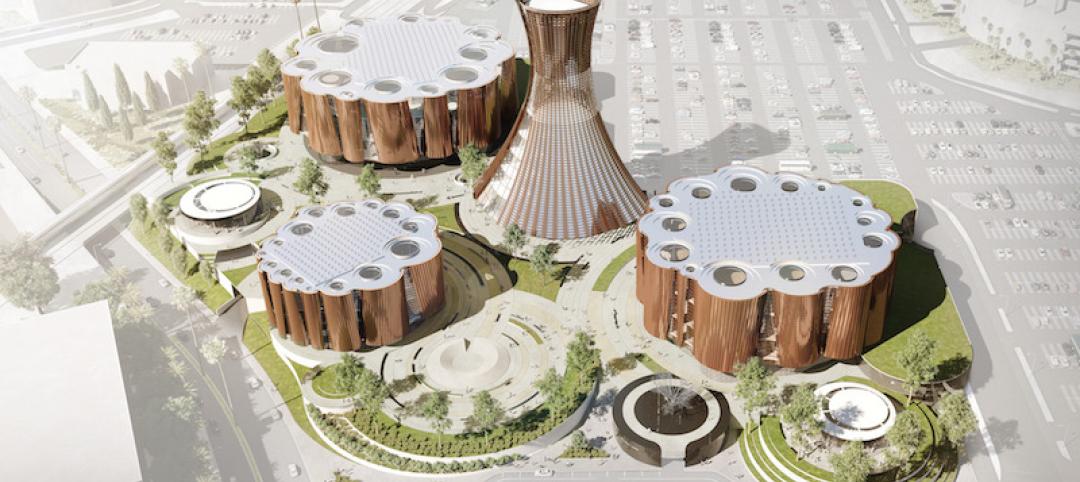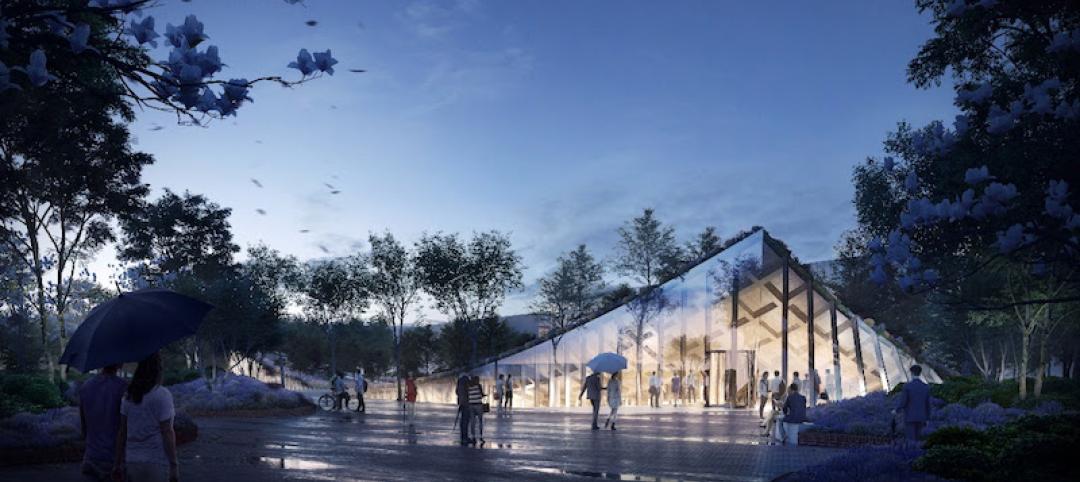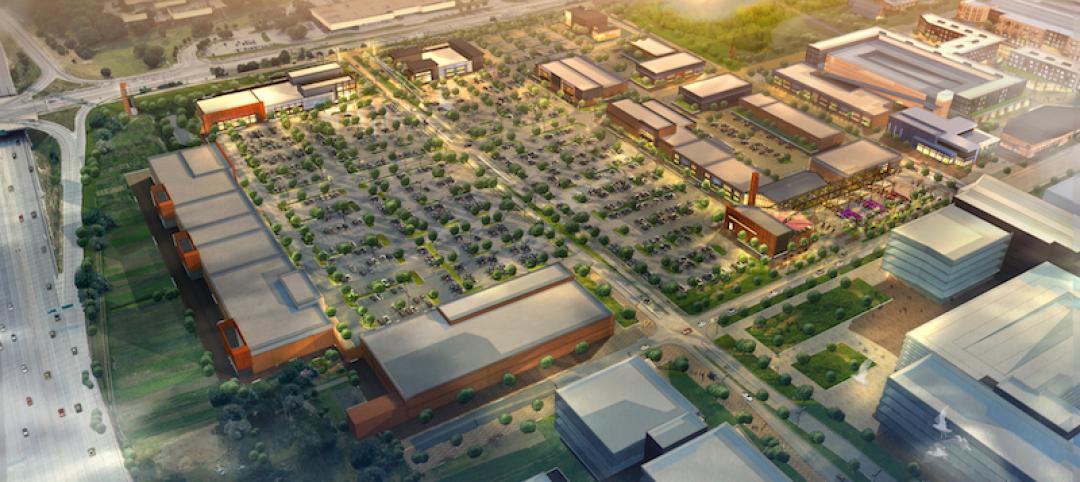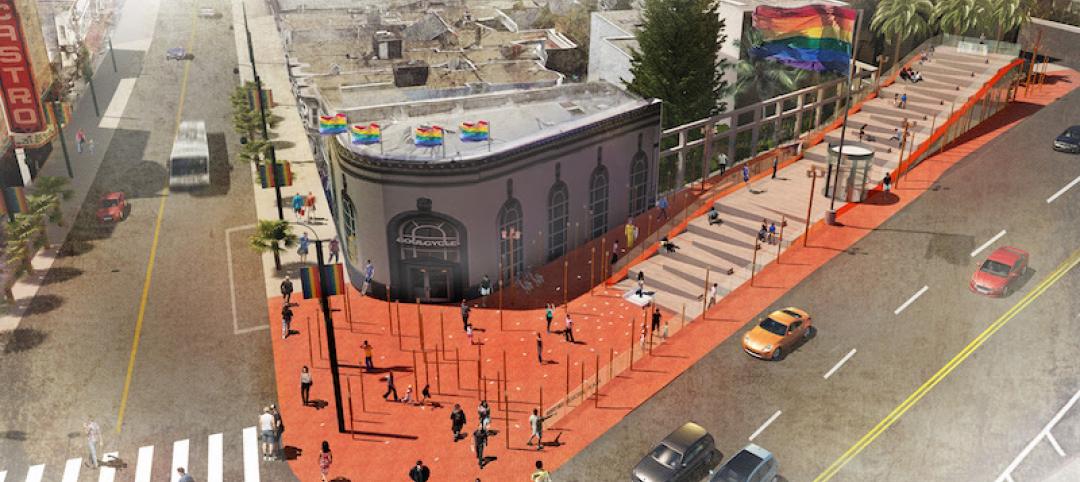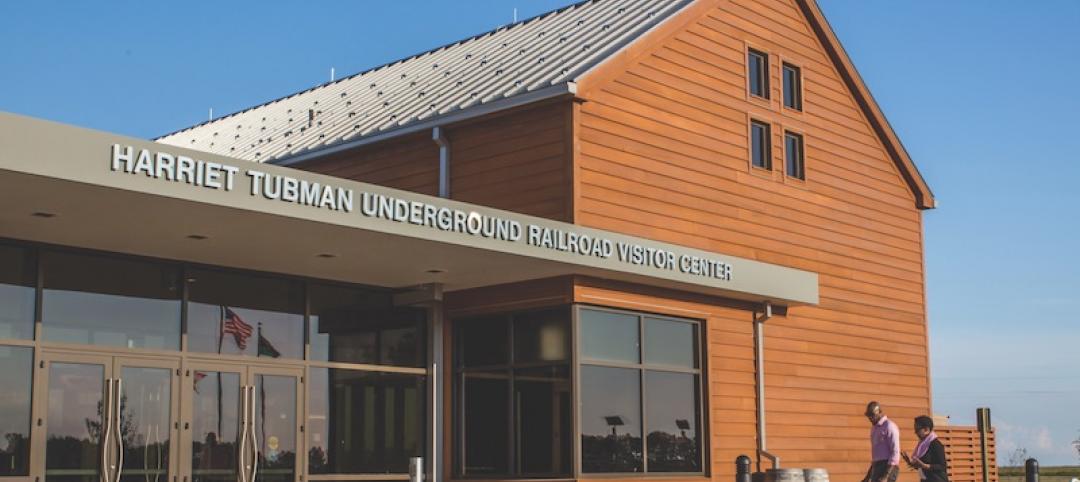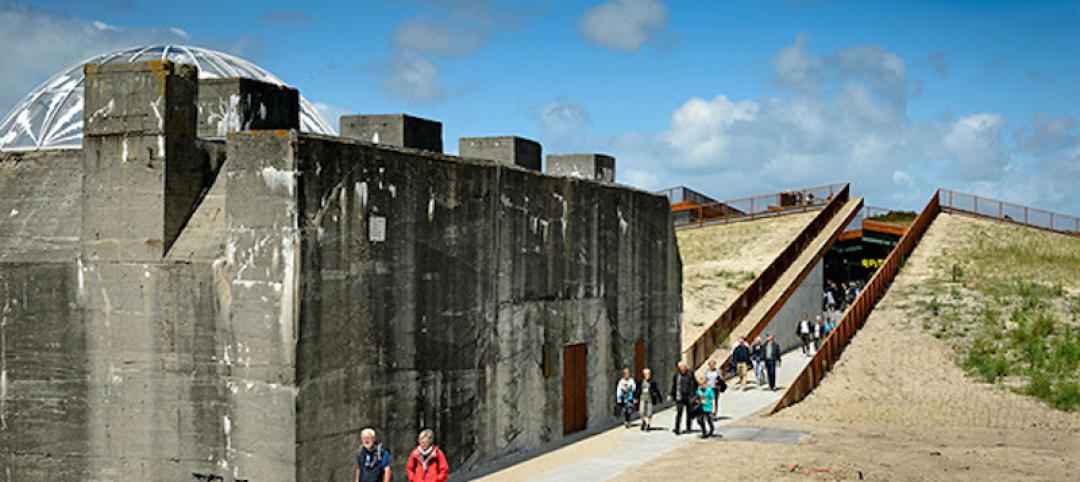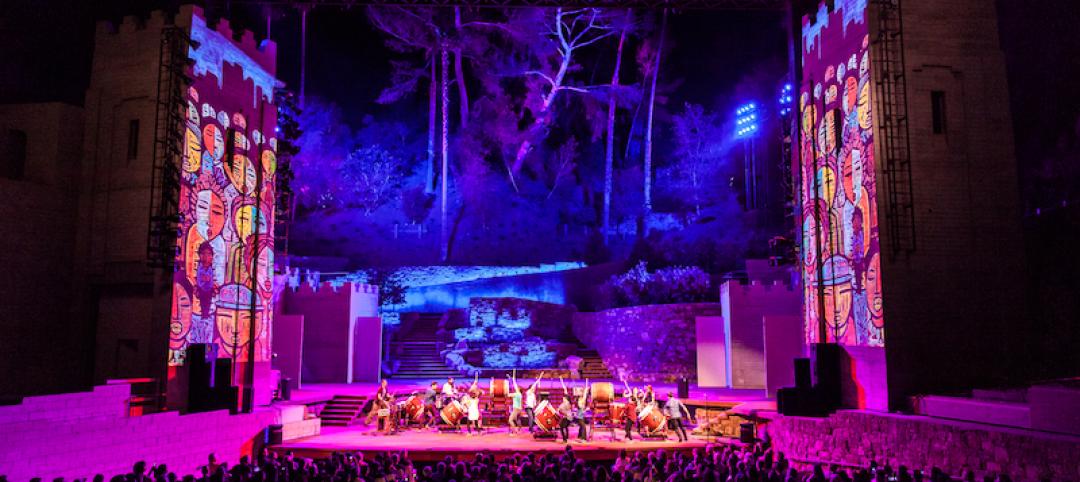More than 600,000 people annually scale the 14,115 feet to reach the summit of Pikes Peak in Colorado Springs, Colo. Until recently, they were greeted by a Summit Complex that had fallen into disrepair. But that’s about to change, as the city of Colorado Springs, in partnership with the U.S. Forest Service, U.S. Army Research Institute of Environmental Medicine, and Colorado Springs Utilities, is building a new Summit Complex and Visitors Center, which breaks ground on June 4.
A second site will consolidate a Plant Building, CSU Communications Facility, and High-Altitude Research Laboratory. The existing Summit House will remain open through the end of construction in the fall of 2020.
The project’s budget is $50 million. The building will be 26,000 sf (compared to the existing center’s 12,000 sf), and include a 200-seat dining area, gift shop, and parking for up to 200 cars.
Pikes Peak, which brigadier general and explorer Zebulon Pike discovered in 1806, is often called America’s Mountain, and its summit is a National Historic Landmark. Its scenic highway let’s anyone, regardless of age or physical condition, reach its apex, with recreation areas and trails along the way.
The intent of this project’s Building Team is to give a seamless, immersive, fully accessible experience with facilities specifically designed for the summit’s harsh environment. “Our goal was to put the experience of Pikes Peak first—the breathtaking views and spectacular beauty—while minimizing the visual impact of architecture on the mountain,” says Alan Reed, FAIA, Design Principal for GWWO Inc./Architects, the Baltimore-based firm that’s the project’s design architect.
RTA Architects is the architect of record. The rest of the Building Team includes HCDA Engineering (SE), Kiowa Engineering (CE) ME Group (MEP), GE Johnson Construction (GC), DHM Design (landscape architect), AECOM (extreme climate consultant), Gallagher & Associates (exhibit design), Jensen Hughes (code and accessibility consultant), The Preservation Studio (historic preservation), NASH Architectural Solutions (specifications), and Webb Foodservice Design (food service design).
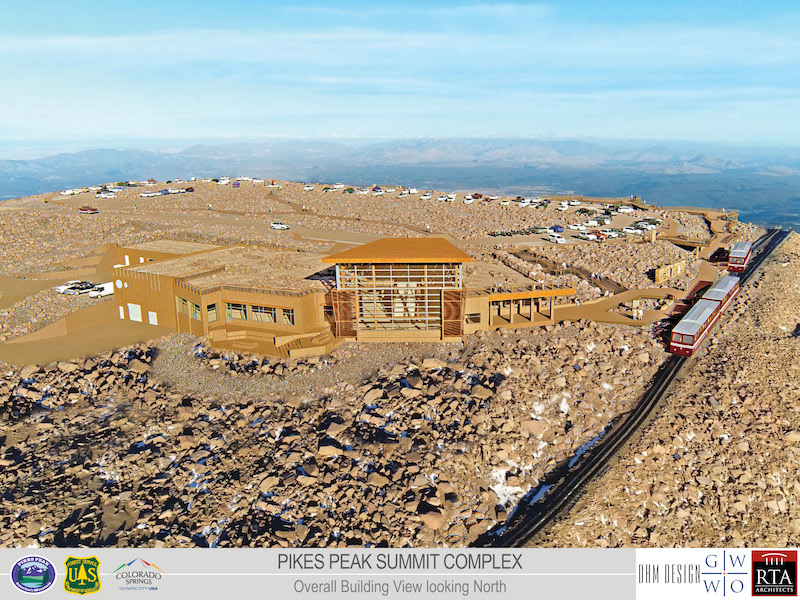
The Summit Complex is being built on the southeast side of the mountain, which will help mitigate the effects of extreme winds and temperatures on the building. Image: RTA Architects, GWWO Inc./Architects
The Building Team sought public input for its final design, whose process began in 2015. The Complex’s exhibits will provide information about the Peak’s formation, discovery, and historical place. Visitors will also be able to experience the mountain via accessible trails and walkways.
The new Visitors Center will be encased in special glass with triple-glazed electrochromic material that darkens to cut glare and solar gain, helping to prevent excessive heat and marred views.
"Because the views are the whole thing," Stuart Coppedge, FAIA, Principal in Charge at RTA Architects, told the Colorado Springs Gazette. "We're really trying to avoid mechanical stuff that can break, that takes a lot of maintenance. The glass darkens to cut the glare. As the sun moves across the sky, the glass would track it around."
The large windows will also feature a ceramic frit that provides UV patterns in the glass that birds can see but people can't.
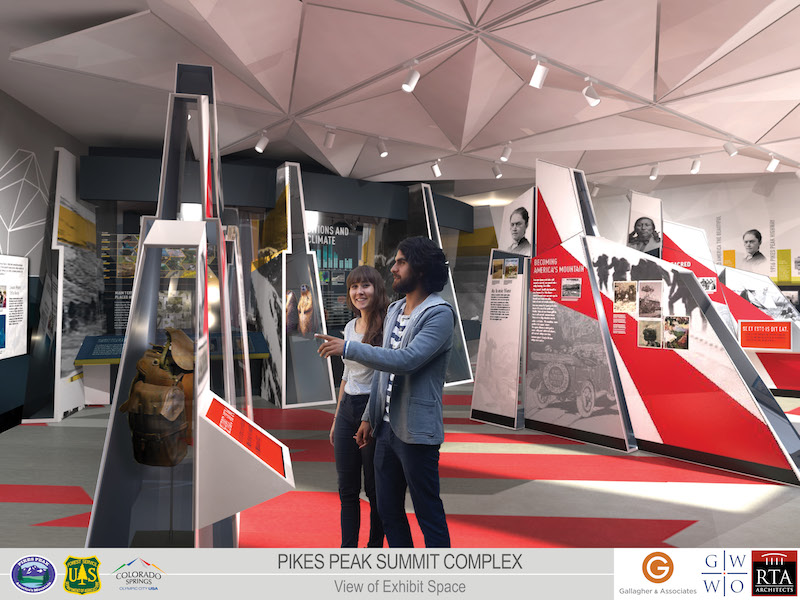
The exhibits will provide information about the mountain's formation, discovery, and historical place. Image: Gallagher & Associates, GWWO Inc./Architects
The project is pursuing LEED Gold and Living Building Challenge certifications. The Summit Complex is expected to produce more energy than it consumes, thereby reducing its operating costs and minimizing its ecological impact. Resilient materials, and its location on the southeast side of the mountain, will help the Complex resist extreme winds, temperatures, and freeze thaw cycles. And the site has been designed to take advantage of the mountain’s hydrological water flows.
”Our entire team embraced the technical challenges of this project with passion, skill and dedication, knowing how important and special Pikes Peak is,” says Coppedge.
Due to construction, parking at the site will be limited and restricted. And the Pikes Peak Cog Railway is closed indefinitely. So last Thursday, the city launched a more frequent shuttle service to the top. Between 30 and 35 shuttles seating 15 to 24 passengers each will make pickups and dropoffs every hour, with the goal of reducing waiting to no more than five minutes. The shuttles will run from May 31 through September 15, which are Pikes Peak’s highest volume months.
Related Stories
Cultural Facilities | Apr 16, 2018
Best in library design 2018: Six projects earn AIA/ALA library awards
Austin Central Library and the Tulsa City-County Central Library are among the top projects for 2018.
Performing Arts Centers | Feb 20, 2018
Citrus trees inspired the design of this half-billion-dollar performing arts center
SPF:architects designed the complex.
Cultural Facilities | Jan 23, 2018
BIG reveals revised Smithsonian Campus master plan
The original proposal was first unveiled in 2014.
Mixed-Use | Dec 12, 2017
A new live/work neighborhood is about to get under way in Omaha, Neb.
Walkability and recreation will be key features of West Farm.
Cultural Facilities | Nov 2, 2017
Perkins Eastman wins competition to redesign San Francisco’s Harvey Milk Plaza
The Friends of Harvey Milk Plaza unanimously selected the Perkins Eastman entry as the winner.
Museums | Oct 3, 2017
Denmark’s new LEGO experience hub looks like it’s made out of giant LEGO blocks
The 12,000-sm building is part of Billund, Denmark’s goal to become the ‘Capital for Children.’
Museums | Aug 15, 2017
Underground Railroad Visitor Center tells story of oppression, then freedom
The museum is conceived as a series of abstracted forms made up of two main structures, one administrative and one exhibit.
Cultural Facilities | Jul 13, 2017
A WWII bunker becomes a museum along Denmark’s coast
BIG’s design of this cultural center is the “antithesis” of the fortress.
Museums | Jul 5, 2017
Addition by subtraction: Art Share L.A. renovation strips away its acquired superfluity
The redesign of the 28,000-sf building is prioritizing flexibility, openness, and connectivity.
Performing Arts Centers | Jun 30, 2017
L.A.’s John Anson Ford Amphitheater might finally be ready for its close-up
The performing arts venue, nearly a century old, has undergone an extensive refurbishing.




